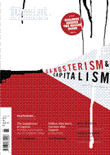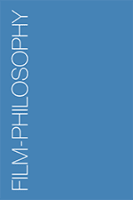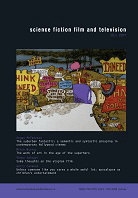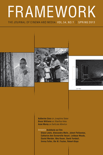
CINEASTE
Scope & Guideline
Advancing Scholarship in Film Studies
Introduction
Aims and Scopes
- Film Criticism and Theory:
Cineaste publishes in-depth analyses and critiques of films, exploring their thematic elements, stylistic choices, and cultural impact. This includes discussions on genre, narrative structure, and cinematic techniques. - Cultural and Historical Context:
The journal often situates films within broader cultural and historical frameworks, examining how films reflect, challenge, or contribute to societal issues, including race, gender, and political identity. - Interviews with Filmmakers and Scholars:
Cineaste features interviews with prominent filmmakers and film scholars, providing insights into their creative processes and perspectives on contemporary issues in cinema. - Exploration of Global Cinema:
The journal emphasizes the importance of international cinema, highlighting films from diverse cultures and regions, and engaging with global cinematic trends. - Focus on Independent and Art House Films:
Cineaste frequently highlights independent and art house cinema, showcasing films that may not receive mainstream attention but offer significant artistic and cultural contributions.
Trending and Emerging
- Intersection of Film and Social Issues:
Recent publications increasingly examine the relationship between cinema and social justice movements, highlighting how films address themes of race, gender, and environmental concerns. - Documentary and Non-Fiction Cinema:
There is a growing emphasis on documentary filmmaking, exploring the genre's role in shaping public discourse and its unique narrative techniques. - Digital Streaming and Cinema's Future:
Cineaste has begun to address the impact of digital streaming platforms on film distribution, audience engagement, and the evolving nature of cinematic experiences. - Global Perspectives and Diverse Voices:
The journal is increasingly featuring films from underrepresented filmmakers and regions, emphasizing the importance of diverse narratives in the global cinematic landscape. - Cinematic Adaptations and Reinterpretations:
There is a notable trend in analyzing adaptations of literature, history, and other media, exploring how these reinterpretations impact audience perceptions and cultural narratives.
Declining or Waning
- Mainstream Hollywood Analysis:
There has been a noticeable decrease in articles focusing on mainstream Hollywood productions, suggesting a shift towards more niche and independent films that challenge conventional storytelling. - Historical Retrospectives:
While historical analysis remains a component of the journal, the frequency of retrospective pieces examining classic films or specific eras has diminished, possibly indicating a move towards contemporary cinema. - Theoretical Frameworks:
The exploration of specific film theories, such as structuralism or postmodernism, appears less frequently, as the journal may prioritize more accessible critiques and discussions. - Technical Film Production Studies:
Research and articles focused on the technical aspects of filmmaking, such as cinematography or editing techniques, have become less prominent, reflecting a broader interest in narrative and thematic analyses.
Similar Journals

Film International
Illuminating the Art and Impact of Film.Film International is a prominent journal dedicated to the exploration of film and its cultural, social, and artistic significance. Published by INTELLECT LTD, this journal serves as a platform for interdisciplinary studies in the field of film criticism, theory, and scholarship, contributing valuable insights from both established and emerging researchers. With an ISSN of 1651-6826 and an E-ISSN of 2040-3801, the journal is an essential resource for those engaged in the realms of communication, cultural studies, and visual arts, though it is currently classified in the lower quartiles of these fields (Q4). Noteworthy for its critical perspectives and diverse content, Film International enhances the dialogue surrounding cinematic practices and their impact on society. Researchers, professionals, and students can explore its rich assemblage of articles and reviews that reflect the evolving landscape of film studies, making it a significant addition to the academic community focused on the art of film.

Film-Philosophy
Exploring the Nexus of Cinema and ThoughtFilm-Philosophy is an esteemed academic journal published by Edinburgh University Press, specializing in the intersection of film studies and philosophical discourse. Since its launch in 1998, this Open Access journal has provided a platform for scholarly debates and innovative research, allowing for free and unrestricted access to its content, which has significantly contributed to the global dialogue on visual culture. With a commendable impact illustrated by its Q1 ranking in Visual Arts and Performing Arts and Q2 in Philosophy, the journal sits within the top quartile of its field. Operating from the United Kingdom, Film-Philosophy is committed to fostering a multidisciplinary approach, inviting contributions from researchers, professionals, and students alike. By engaging with critical theories and the aesthetics of cinema, the journal stands as a vital resource for understanding the philosophical implications of film and its cultural significance.

Studies in Eastern European Cinema
Decoding the Cinematic Language of Eastern EuropeStudies in Eastern European Cinema is a distinguished journal dedicated to exploring the rich and diverse landscape of cinematic art in Eastern Europe. Published by Routledge Journals, Taylor & Francis Ltd, this journal has carved a unique niche since its inception in 2010, providing insightful analysis and fostering dialogue among scholars, professionals, and students in the fields of Communication and Visual Arts and Performing Arts. With a current impact factor reflected in its respective quartile rankings, which position it in Q4 in Communication and Q2 in Visual Arts and Performing Arts, the journal serves as an essential platform for research and discourse on the cinematic contributions of Eastern Europe. Featuring contributions that analyze historical contexts, artistic trends, and cultural implications, it aims to broaden the understanding of Eastern European cinema's role within the global film landscape. While it offers a traditional subscription model, its ongoing commitment from 2010 to 2024 ensures it remains at the forefront of academic inquiries, appealing to a growing audience dedicated to the appreciation and scholarship of Eastern European cinematic arts.

MILLENNIUM FILM JOURNAL
Exploring the Depths of Cinema's Cultural Tapestry.MILLENNIUM FILM JOURNAL, published by MILLENNIUM FILM WORKSHOP INC, stands as a pivotal platform for exploration and discourse within the realm of film studies. With its ISSN 1064-5586, the journal has been noteworthy in delineating the complexities of visual arts and performing arts, contributing significantly to academic scholarship between the years 2009 to 2016, and in 2018. Though its coverage has been discontinued in Scopus, the journal has attained a respectable position within its category, ranking #320 out of 502 in the Arts and Humanities field. Researchers, professionals, and students alike are invited to engage with interdisciplinary discussions that illuminate the cultural and theoretical dimensions of cinema. While currently not offering open access options, the journal continues to serve as a vital resource for those deeply invested in the study of film, making it a respected voice in visual arts and performance research.

Transnational Screens
Navigating the Dynamic Intersections of Art and CommunicationTransnational Screens is a premier academic journal published by Taylor & Francis Ltd, focusing on the dynamic intersections of visual arts, performing arts, and communication in a globalized context. Since its inception, the journal has garnered significant recognition, featuring in the Q1 category for Visual Arts and Performing Arts and Q3 for Communication as of 2023, reflecting its influential contributions to these fields. With a Scopus ranking placing it in the 78th percentile in Visual Arts and Performing Arts, this journal serves as a vital platform for researchers, professionals, and students aiming to explore the implications of transnational narratives in contemporary media and artistic practices. The journal is accessible to a diverse readership and promotes open dialogue through its commitment to publishing innovative and interdisciplinary research from 2020 to 2024. As a key resource for understanding the complexities of transnational screens, it invites submissions that push the boundaries of traditional scholarship and engage with pressing global issues through the lens of the visual and performing arts.

Hrvatski Filmski Ljetopis
Unveiling the Evolution of Film in Croatia.Hrvatski Filmski Ljetopis, published by the Croatian Film Clubs Association, serves as a pivotal academic journal in the field of film studies, celebrating and analyzing the rich cinematic heritage of Croatia and beyond. With an ISSN of 1330-7665, this journal caters to researchers, practitioners, and students who are passionate about the art of filmmaking, encompassing both theoretical discourse and practical implications. Although it is not currently available as an open-access publication, its curated content is of significant value to anyone interested in the evolution, critique, and history of film in a Croatian context, having previously been indexed in Scopus until coverage was discontinued. The journal operates out of Zagreb, Croatia, at the Croatian Film Clubs Association headquarters, and aims to foster scholarly dialogue while contributing to the broader field of national and international cinematography.

Science Fiction Film and Television
Advancing Critical Dialogues in Sci-Fi Cinematic ArtistryScience Fiction Film and Television, published by LIVERPOOL UNIV PRESS, is a leading academic journal that explores the rich intersection of science fiction with cinematic and television narratives. With an ISSN of 1754-3770 and E-ISSN 1754-3789, this journal provides a platform for critically engaging with both historical and contemporary works within the genre, offering insights into its cultural significance, aesthetic innovations, and societal impacts. As part of the communication and visual arts fields, it is recognized in the Scopus ranking, achieving an impressive percentile of 87th in Visual Arts and Performing Arts, and maintaining a respectable rank within communication studies. Since its inception in 2018, it aims to foster dialogues among scholars, professionals, and students, making substantial contributions to the understanding of science fiction as a vital cultural phenomenon. With access options that cater to a broad audience, Science Fiction Film and Television is essential reading for those interested in exploring the innovative potentials and narratives of science fiction across media.

Framework-The Journal of Cinema and Media
Engaging with contemporary debates in film.Framework: The Journal of Cinema and Media is a prominent academic journal published by Wayne State University Press, focusing on the dynamic fields of cinema studies and media theory. With an ISSN of 0306-7661 and an E-ISSN of 1559-7989, it serves as a key platform for researchers, professionals, and students to explore critical issues in media culture, film theory, and the intersection of digital technologies and narrative. Although it does not currently offer open access, the journal maintains a reputation for rigorous scholarship and thought-provoking content, providing insights that challenge conventional understandings of media and its impact on society. Published in Detroit, MI, Framework continues to engage with contemporary debates and innovative practices in cinema and media, making it an essential resource for those dedicated to advancing research in these vibrant disciplines.

Studies in Russian and Soviet Cinema
Transforming Perspectives on Visual Arts and CommunicationStudies in Russian and Soviet Cinema, published by Routledge Journals, Taylor & Francis Ltd, provides a critical forum for the exploration and analysis of cinematic practices, histories, and cultures from the Russian and Soviet eras. With its ISSN 1750-3132 and E-ISSN 1750-3140, this journal operates under the editorial guidance of leading scholars in the field, making significant contributions to the Visual Arts and Performing Arts and Communication categories, where it is ranked in the upper quartiles of its peer group. The journal spans a rich period of study, converging insights from 2006 to 2024, thereby allowing for an in-depth understanding of the evolution and impact of cinema in societal narratives. Researchers and enthusiasts alike will appreciate its dedication to illuminating the often-neglected cinematic treasures of Russia and the Soviet Union, promoting scholarly discourse through its rigorous analyses and diverse range of articles. This journal serves as an essential resource for anyone interested in the intersections of film, culture, and history.

Canadian Journal of Film Studies-Revue Canadienne d Etudes Cinematographiques
Exploring the Depths of Canadian CinemaCanadian Journal of Film Studies-Revue Canadienne d'Études Cinématographiques is a distinguished publication dedicated to the exploration of film studies within the context of Canadian cinema and global visual arts. Published by University of Toronto Press Inc., this journal offers a platform for innovative and critical scholarship, having achieved a notable Q2 ranking in the Visual Arts and Performing Arts category for 2023, with an impressive Scopus rank of 207 out of 667, positioning it in the 68th percentile among peers. With a continuous publication record since its established years from 1998 to 2001 and 2004 to 2024, it has become an essential resource for researchers, professionals, and students interested in the evolving landscape of film and cinema. The journal not only addresses theoretical perspectives but also engages with contemporary practices, thereby fostering a deeper understanding of cinematic arts. Despite not offering open access, it remains a vital repository of knowledge for those seeking to advance their studies and contribute to the discourse in film studies.